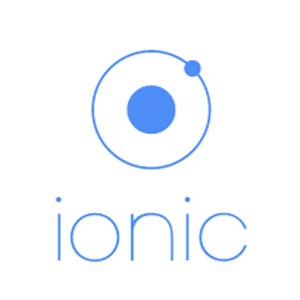 NEWS
NEWS
 NEWS
NEWS
 NEWS
NEWS
![]() In general, the native apps are still favored by developers over web applications due to the fact that they are able to ensure a higher level of performance and greater integration with the operating systems adopted by mobile devices, such as smartphones and tablets. The HTML5 landscape has improved so much in recent years that native mobile apps have started using HTML, CSS and JavaScript to increase performance.
In general, the native apps are still favored by developers over web applications due to the fact that they are able to ensure a higher level of performance and greater integration with the operating systems adopted by mobile devices, such as smartphones and tablets. The HTML5 landscape has improved so much in recent years that native mobile apps have started using HTML, CSS and JavaScript to increase performance.
Even today HTML5 use increases and developers seek solutions that make it possible to adopt web standards that can achieve performance comparable to those of the native apps. Hybrid web-native HTML5 mobile app framework Ionic might just represent that bridge.
Bond between HTML5 and Native
Ionic project, released under an Open Source license, is currently still in alpha, but its operation is based on the tried and tested tool Angular.JS. Modeled off of popular native mobile development SDKs, Ionic is easy to understand for anyone that has built a native app for iOS or Android.
Ionic sees itself as a front-end framework, using its hybrid mobile toolset that can be developed based on HTML5. The free open source HTML5 Mobile Framework can be used for building amazing, cross-platform native apps with HTML, JavaScript, and CSS. The framework is based on SASS (Syntactically Awesome Style Sheets) CSS extension and optimized for AngularJS, a popular JavaScript UI framework that has seen considerable growth.
AngularJS is the framework made by Google. Angular features structuring MVW (Model-View-Whatever) like other frameworks, but the true strength is the angular two-way data-binding, which allows the HTML updater automatically depending on the data used by an application. It greatly reduces the number of lines of code while increasing the ease with which developers can maintain the code later while reducing errors. Angular also allows dependency injection, routing, template engine and many other things.
The platform includes legacy system adapters, shared back-end services, application component libraries, a software development kit, and a suite of end-user applications.
Developers of Ionic emphasized that the framework is not a feasible alternative to tools for conversion of native applications into Web applications, such as PhoneGap, or other JavaScript frameworks specialize in creating Web-based Mobile apps such as jQuery Mobile. It is more properly designed as a library integrated with other SDK for the creation of user interfaces designed for mobile platforms like iOS and Android.
“The goal of what we’re trying to do is basically provide the most compelling alternative to building with the iOS or Android native SDKs and any other native SDKs that we end up supporting in the future,” said Max Lynch, CTO at Drifty, which oversees development of Ionic. “Instead of spending half a year on two entirely different code bases for iOS and Android, you can build just one with HTML5.”
Native focused beautifully designed framework
Ionic is quite sexy and optimized for native apps. The clean, simple, and functional interface has been designed to work and display beautifully on all current mobile devices. Developers need to drop it in code to get going, and push through PhoneGap when it’s ready.
The framework contains mobile components such as buttons, lists, forms, cards, toggles, checkboxes, radio buttons, range slider, tab bar, header bar, footer bar, grider system and others. It also contains typography, interactive paradigms, and extensible base theme and focuses on standards compliant code.
Ionic 0.9.x beta supports UIWebView for iOS 6 and 7, and Android 4.2+. Theonly limitation is the framework is created only for mobile support and no support included for desktop-based browsers. A rich documentation is available for anyone to start with the framework and the source code is available on GitHub.
THANK YOU